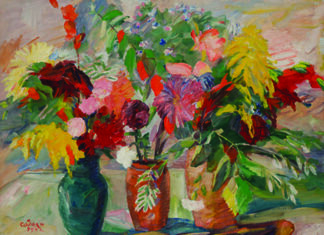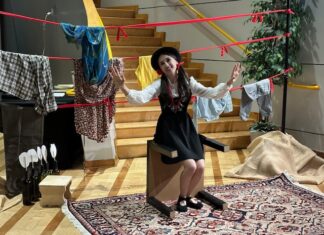By Marni Pilafian
Special to the Mirror-Spectator
WHEATON,Md. — The steep climb of 20 handcrafted steps to reach the hilltop home of artist Levon Jamgochian was only the beginning of this adventure. Wheaton is a Washington suburb of scant hills; but Jamgochian bought a house on a steep hillside. (“It reminded me of the churches built into the sides of steep mountains in the rugged countryside of Armenia.”)
He used to tie a rope to his lawnmower to cut the grass by sending it down the hill and pulling it up again and again; in order to avoid this exhausting method, he built a series of terraces to overcome the steepness and planted pines and evergreens. Lush arbors resulted. He framed the front door with slender evergreens, growing and bending over time, bowing over the entrance. It graces the inner- sanctum of the artist.
The house has walls lined with a rich history of Jamgochian’s works. Prints hang in order of their gallery showings, evolving from one medium with a one-dimensional view to layer upon layer of prints evolving into something magical. In one series, a simple view of nature evolves into a series of prints bringing forth images of a New York skyline.
The living room holds wood sculptures wrought and rendered from nature. Gnarled roots of wood, tree knots and elbows placed at angles to capture the imagination, installed on a finished block of wood. Some appear to capture the human form in all its grace. Others bend the imagination in attempting to place the object into a known perspective . Looking upward, colorful paintings suspended from the ceiling surprise the visitor. These are the highly skilled works of a truly gifted, passionate and hardworking artist.
Jamgochian, born in Beirut, is an artist with a global following. He has held more than 50 solo exhibitions worldwide, from Miami to Milan to Moscow, from Istanbul to Toronto, from the Ukraine to Echmiadzin.









